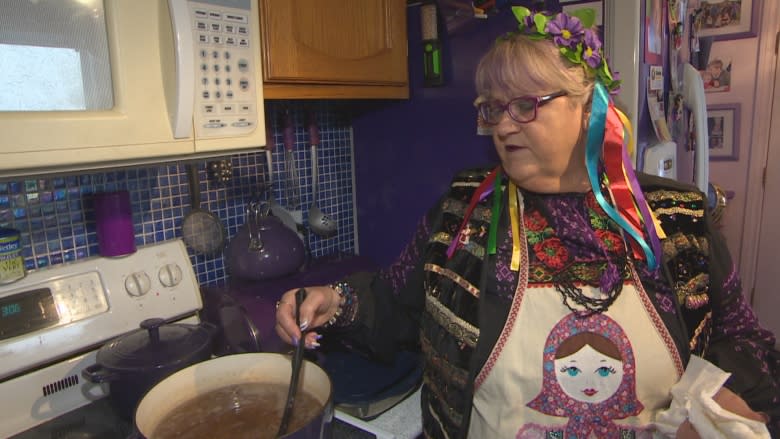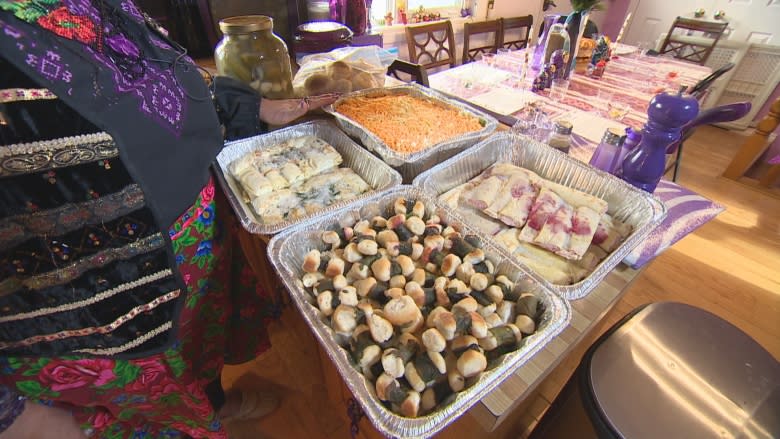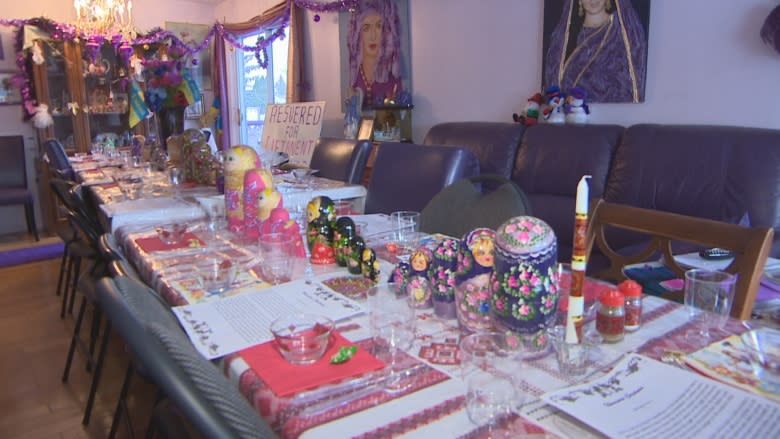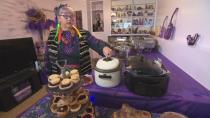Keeping traditions alive for Ukrainian Christmas
Barb Dedi starts preparing for her Ukrainian Christmas Eve meal during the summer, growing dill and beets in her garden to freeze.
About a week before Christian Orthodox Christmas on Jan. 7, the work truly begins, culminating in a cooking frenzy that starts three days before the meal.
The day of the Christmas Eve meal, she expects to be cooking from 4 a.m. until guests arrive at 5 p.m.
Dedi has been busy whipping up more than 30 dishes, including an array of desserts and the 12 meatless dishes traditionally served at a Ukrainian Christmas Eve meal.
She'll be serving 50 guests at the annual event in her home in Regina. She's been hosting the dinner every year for a decade.
Notable guests include Mayor Michael Fougere and Lt.-Gov. Vaughn Solomon Schofield. Dedi has also invited 15 leaders from ethnic communities such as India, China, Vietnam, Ireland, Africa and Indigenous groups.
Traditions passed down from generations
This year, she's been inviting people to learn how to do the cooking.
"I learned from my baba when I was quite young, and then I was remiss for a few years until I got married to a Ukrainian fellow, and then I learned a lot from my mother-in-law, and now I'm teaching my granddaughter," she said.
Ukrainian Christmas has many traditions, though Dedi said some have fallen by the wayside for practical reasons.
Her family used to throw wheat at the ceiling — the number of kernels that stuck would tell you how much good luck you would have in the next year — but they stopped when it got caught in the stucco.
The meaning behind the rituals
In Mary Holowachuck's home in Saskatoon, celebrations start with the man of the house bringing in a sheaf of wheat, symbolizing the staff of life. Supper starts when the youngest child sees the first star, representing the star of Bethlehem.
"The table symbolizes the stable, where Jesus was born, and we have wheat or straw thrown underneath the table, and the white embroidered cloth representing the manger."
They always leave one setting empty, representing family members who have died or aren't able to be at the dinner that day.
The supper also includes the traditional 12 meatless dishes.
"The reason that they're meatless is that the animals that were in the stable when Jesus was born paid homage to Jesus, and to pay respect back to them, we don't eat any animal products at all," Holowachuck said, adding that they also symbolize the 12 apostles.
At Dedi's celebrations, clean up for a meal with 50 guests is its own special challenge, though she said it helped moving to paper plates in recent years instead of using the good china.
There's also a lot of leftovers, but the lucky guests are given takeout containers and told to help themselves.










